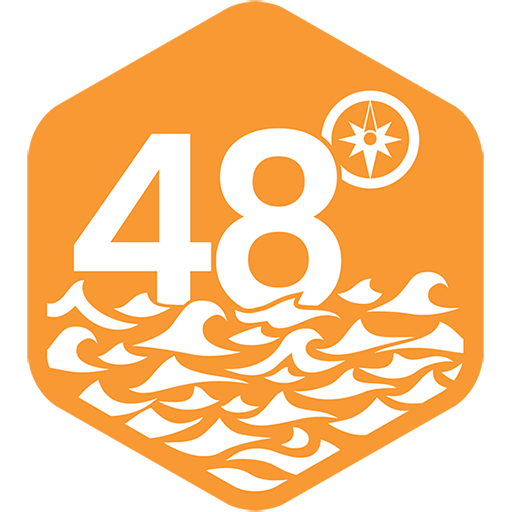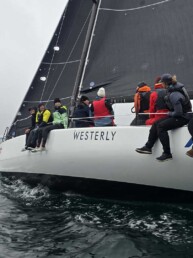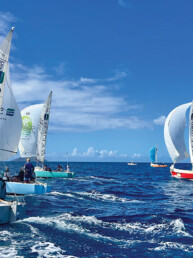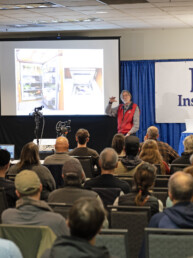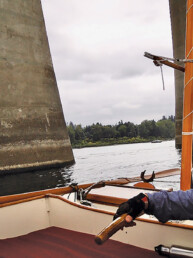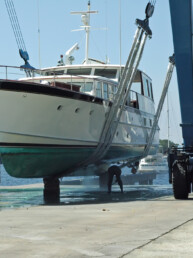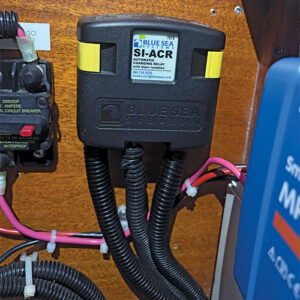
There’s a popular saying among marine technicians, “Batteries don’t just die, they’re murdered.” And it’s true. Most battery failures we see on cruising boats are not because the batteries themselves were misbehaving or suffer from manufacturing defects. Rather they are the result of their owner not fully understanding how their boat is wired or how their battery charging systems work… or don’t. High quality lead-acid batteries can live long and prosperous lives serving a cruising boat for many years, so long as they are properly cared for.
The three golden guidelines for battery health are:
- Don’t discharge too deeply.
- Charge them fully and regularly, as recommended by the manufacturer.
- Keep your battery banks properly isolated.
That third guideline, bank isolation, is more critical than you think, yet it remains one of the least understood concepts in marine electrical systems. Most cruising boats carry at least two battery banks: a house bank that keeps the lights on, the fridge cold, and so on, and a start bank dedicated solely to cranking the engine. In an ideal world, these two banks are completely separate and isolated from one another. That way, even if you accidentally drain the house bank making margaritas all night via your boat’s inverter, the engine start battery is still ready to get you moving in the morning.
Without battery bank isolation, you risk flattening all batteries onboard at once. When battery banks are combined or paralleled, differences in age, chemistry, or capacity can shorten the lifespan of all the batteries. Mixing old and new batteries is a recipe for early failure. That’s why you’ve probably heard professionals recommend replacing an entire bank with identical batteries, never mixing and matching.
Outdated Isolation Methods
Boatbuilders and DIYers have employed a wide variety of methods to isolate battery banks over the years. The most common—and most fallible—legacy solution is the ubiquitous “1-2-All”
or “1-2-Both” switch. This relic is still present on countless boats and it can certainly work if you understand your wiring intimately; you always remember to set it in the correct position for motoring, anchoring, and charging; and you never, ever forget. But that’s a lot of trust to put in human memory, especially on boats that have been progressively rewired over the years. And the reality is that many boats are wired incorrectly when modified by past owners or are simply too complex for casual operators to manage efficiently with a manual switch.
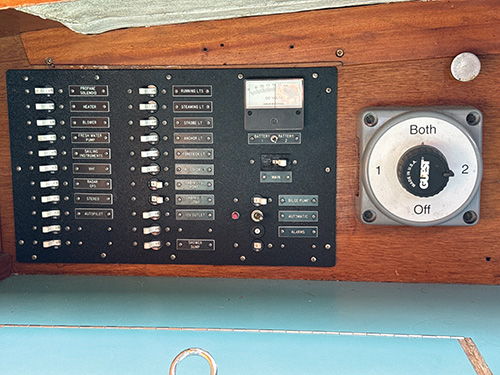
Another legacy option is the diode isolator. These nifty little devices employ diodes that act as electrical check valves and allow current to flow in only one direction, keeping banks separate while still letting them charge. There is a significant drawback to this technology, though—it causes a voltage drop of about 0.5 volts as current passes through the diode. That means your batteries are constantly being undercharged. This voltage drop can be compensated for with a deep dive into the advanced settings of your charging devices to proportionately increase your charging voltage, but should only be done by professionals.
Both solutions can function, but they’re clunky, outdated, and error-prone. So, especially if you’re thinking, “Hey, my boat’s got one of those relics,” read on.
The Elegant Solution: Voltage Sensing Relays
Enter the Voltage Sensing Relay (VSR), the topic for this month’s question: “Necessary or Nice?” A relay is simply an electrically controlled switch. And a VSR specifically is a relay that monitors line voltage between your boat’s battery banks. When it senses charging voltage on either side of the relay, the switch automatically closes, temporarily connecting your banks in parallel so they both receive available charge current. As soon as the charging source turns off and the line voltage drops, the VSR senses this and automatically switches to the open position, once again ensuring that the battery banks are isolated.
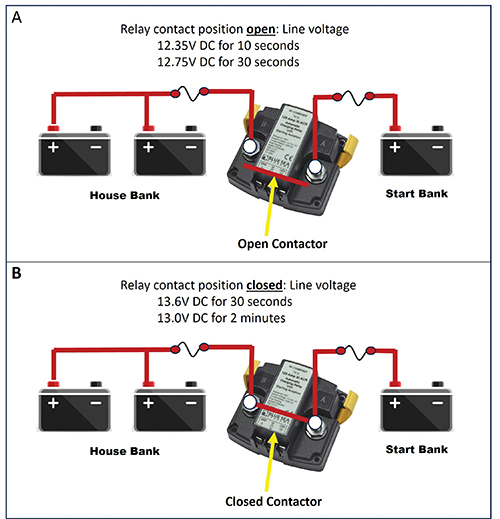
Isolation is only half the story. Modern boats often carry multiple charging sources: solar, wind, hydro, shore chargers, fuel cells, generators, and of course, alternators. A VSR ensures every available amp-hour goes where it’s needed without human intervention. The genius of this system is that it completely removes the possibility of human error. No switches to remember, no voltage drop penalties, just smart, automatic isolation and charging.
These are commercially available from a number of manufacturers with differing specs and features, all serving the same principal function; but we’re going to focus on one from the Bellingham-based company Blue Sea Systems, which they call the Automatic Charging Relay (ACR).
Many boat owners are skeptical about trusting such an important job to a piece of “green chip technology” and we get it. The track record of Blue Sea’s ACRs is rock solid and they come backed by a lifetime guarantee. In all our years of installing, using, and recommending them, we’ve never seen one fail. In fact, we trust one on our own boat, Sea Fox, our 2002 MalÖ 39.
An often-overlooked benefit of the ACR, and the reason we prefer this particular VSR over the alternatives, is its Start Isolation function. When you turn the key to crank your engine, or hit the bow thruster, the electric motor briefly demands a huge amount of inrush current. If your battery banks are connected during that surge, the voltage drop could momentarily drag down sensitive electronics powered by your house bank, causing equipment like chartplotters or radios to brown out or reset. With Start Isolation properly wired, the ACR automatically opens during cranking, protecting your house bank and onboard electronics from that dip. As soon as the engine is running and alternator output comes online, the ACR reconnects and resumes normal charging. It’s a simple, automatic safeguard that most boat owners never even realize they need until the day their navigation screen goes black just as they tap the bow thruster.
For additional peace of mind, the Add-A-Battery Kit pairs the ACR with a simple emergency parallel switch. That way, if one of your boat’s battery banks ever fails completely, you can still combine them manually and get home.
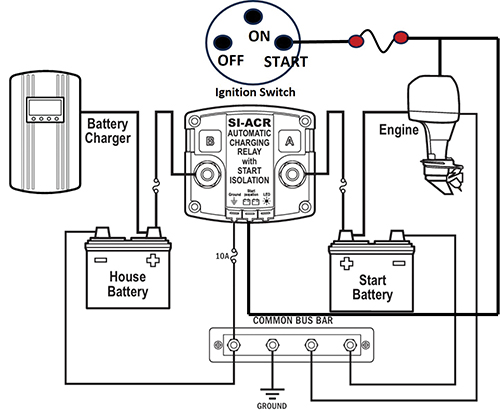
A Few Caveats
We must include an important caveat on compatibility. Automatic Charging Relays are not universal solutions and they are not all created equal. They have different current ratings among the various models, so they must be compatible with the charging capabilities of the system they are installed in. They are not voltage-manipulating devices. They simply connect or disconnect banks based on system voltage. That means all battery banks tied into an ACR should have similar charging profiles and chemistries. Furthermore, charging sources need to be correctly programmed for the batteries that are installed on your boat. ACRs are not recommended for lithium batteries whose charging profiles are unique and require a battery management system. Combining them with traditional lead-acid systems through an ACR should not be attempted. But for most cruising boats running lead-acid banks, an ACR is a simple, reliable, and elegant solution, but it’s not a one-size-fits-all answer.
Final Word
Nobody likes the mess and expense of replacing their boat’s batteries; and the longer you can keep them alive, the longer and farther you can cruise. That’s why we put the VSR, specifically the Blue Sea Systems ACR, firmly in the necessary category for every cruising boat with two battery banks.
When it comes to this magical piece of technology, we must emphasize that installation most certainly matters. A VSR is only as effective as the system it’s wired into. For best results, it should be professionally installed by a qualified marine electrician who can ensure it’s placed correctly in your charging circuit and that your overall system is optimized.
In our opinion, the Automatic Charging Relay isn’t just a convenience, it’s an essential piece of gear for any serious cruiser. It protects your batteries, eliminates human error, and makes the most of every charging opportunity.
Gio and Julie of Pelagic Blue lead offshore sail training expeditions and teach cruising skills classes aimed at preparing aspiring cruisers for safe, self-sufficient cruising on their own boats. Details and expedition sailing schedule at www.pelagicbluecruising.com
